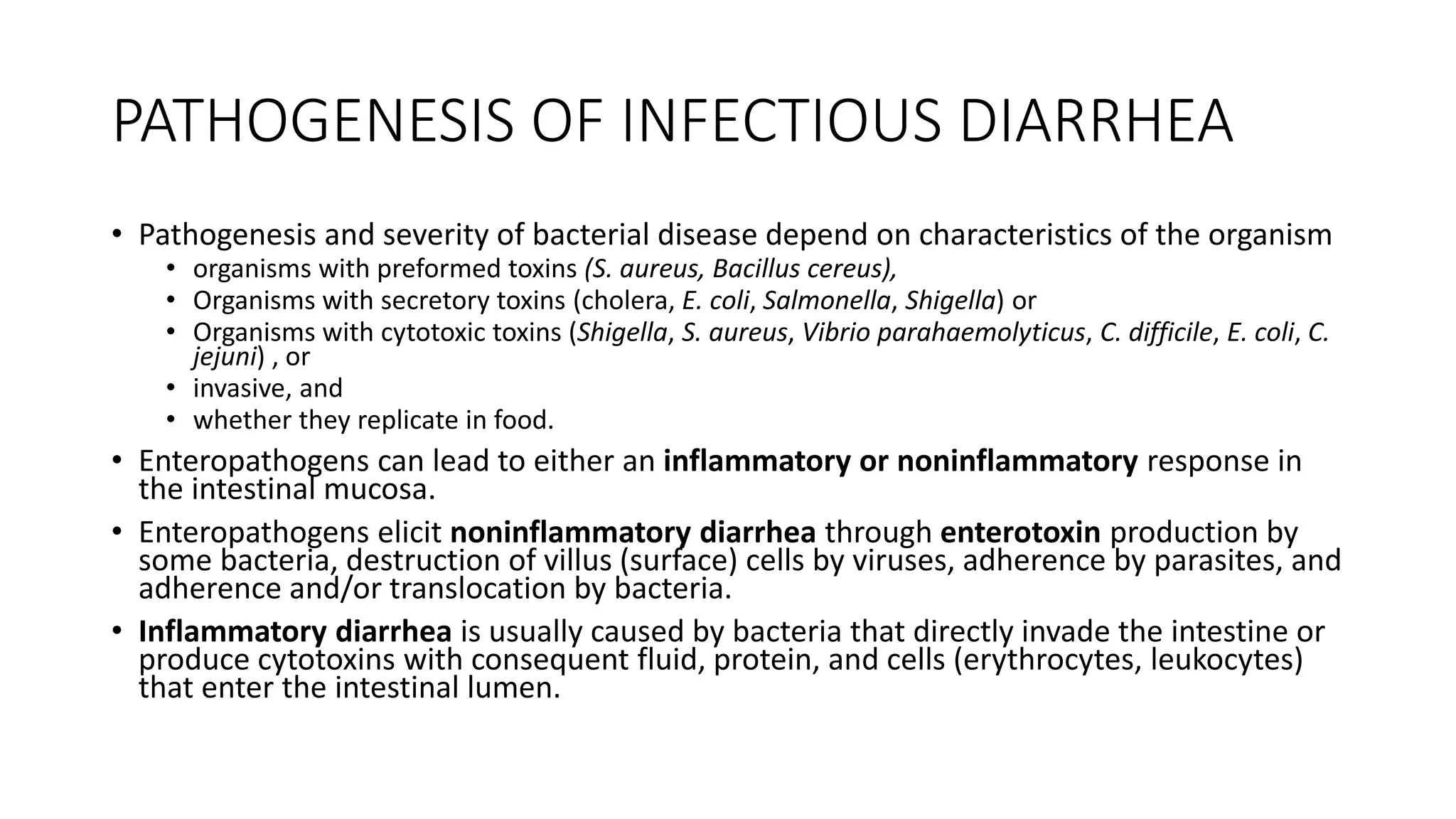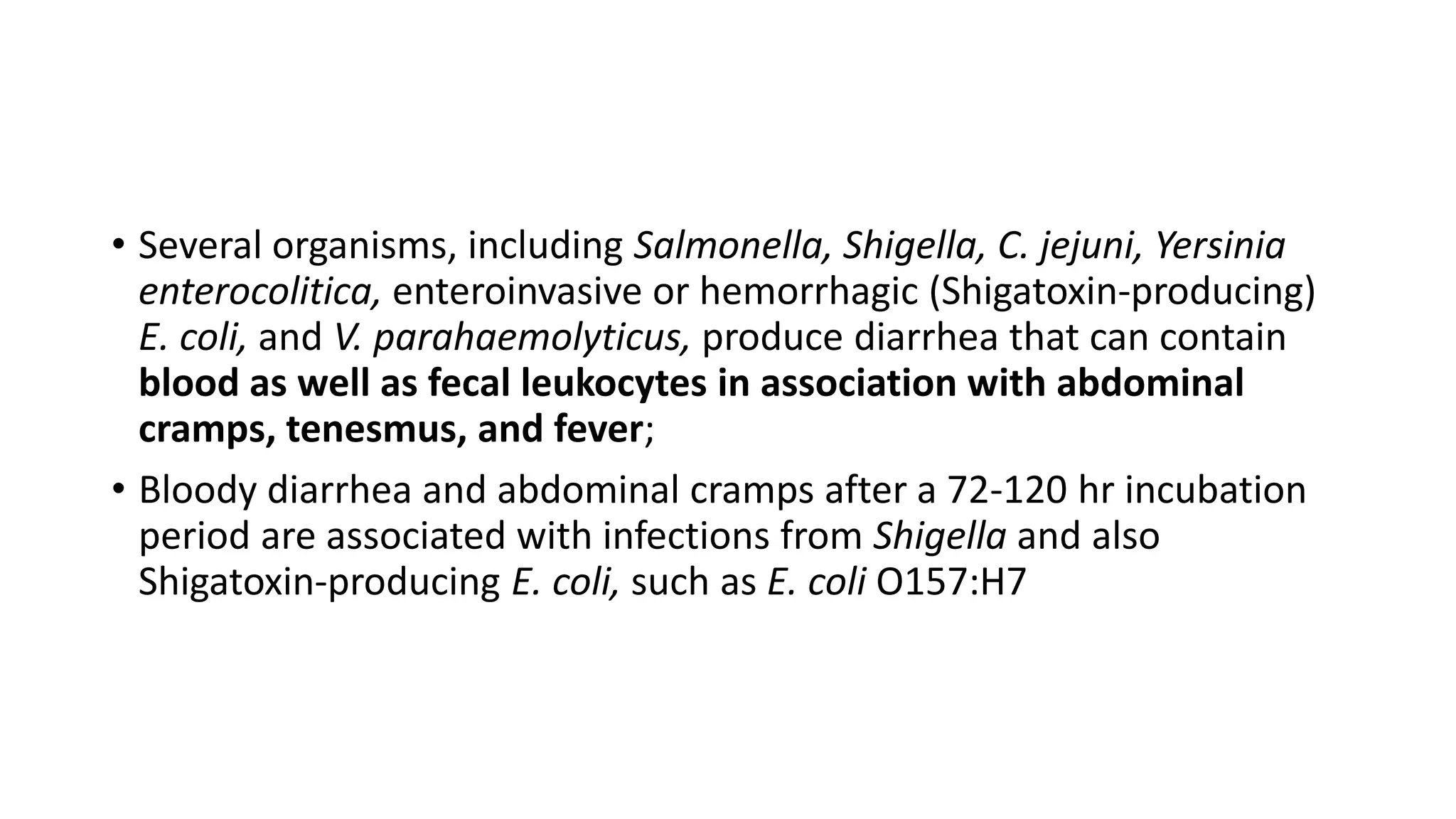This document discusses acute gastroenteritis in children. It covers the epidemiology, etiology, pathogenesis, risk factors, clinical manifestations, diagnosis, treatment, and prevention. Some key points include:
- Diarrheal disorders account for 9% of childhood deaths globally, with most occurring in Africa and South Asia. Rotavirus and norovirus are common causes.
- Risk factors include young age, malnutrition, lack of breastfeeding, and contaminated food/water.
- Clinical manifestations vary depending on the pathogen but often include diarrhea, vomiting, abdominal pain, and fever. Complications can include dehydration.
- Diagnosis involves clinical evaluation and sometimes stool exams. Treatment focuses on oral rehydration and

































































